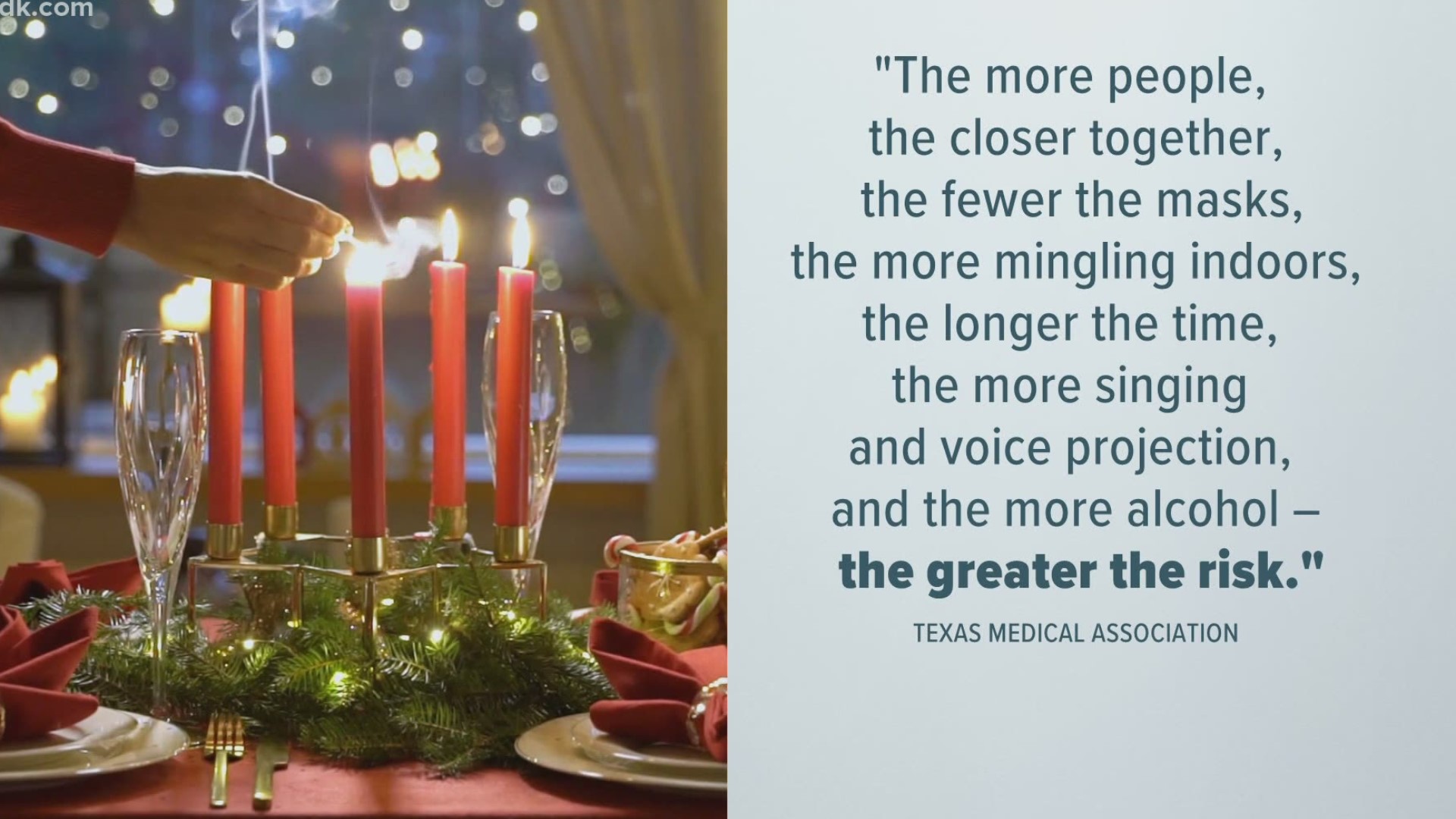ST. LOUIS — Here's a list worth making and checking twice--or maybe even every time you want to schedule activities this season: The Texas Medical Association released a holiday version of its popular "risk assessment chart" from the summer.
Activities are scored from 1 to 10, from least risk to riskiest. This is all assuming participants wear face coverings when practical, socially distance from people they don't live with, and wash their hands regularly.
Lowest-risk activities include mailing letters to Santa, or looking at lights with your family in your car. Low to moderate risk? Thanksgiving dinner with your family in your household, but remember to wash your hands and cover coughs at the table. Activities like outdoor ice skating carry a moderate risk; traveling by plane is also a moderate risk, studies have shown.
Moderate to high-risk activities means they're likely not a good idea. Those include activities like taking photos with Santa, where there is little room to socially distance, or in-person Black Friday shopping, where crowds can be hard to space out. Hosting a holiday party? It could be a surprise super-spreader event.
The highest-risk activities on the chart include attending a New Year's Eve party at a bar or a large indoor celebration with singing.
The guidance summed up? “The more people, the closer together, the fewer the masks, the more mingling indoors, the longer the time, the more singing and voice projection--and the more alcohol--the greater the risk."
What about all the activities with people we don't live with--but trust, and love? Washington University and Barnes Jewish Hospital infectious disease expert Dr. Jason Newland said this year, it’s important to reframe what that means.
“It's not about trust or not," Newland said. "It's just the fact that you can be in a situation and not even realize that you now have contracted the virus.
“So I would argue now our trust in one another is the trust that we know we're going to do the behaviors of masking, distancing not only outside of our homes but also when we're in our homes together with people that don't live there. That's just another level. That's where we are.”


